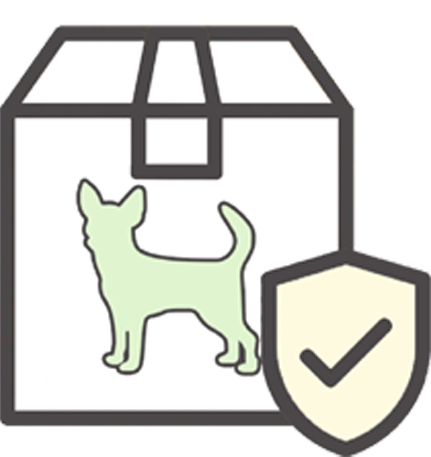Indoor Dog Potties: Do They Really Work?
Updated On: Friday, August 8, 2025 07:35:41 AM America/Los_Angeles
As a dog owner, you may find yourself facing unique challenges when it comes to providing your furry friend with an appropriate place to relieve themselves. This is especially true if you work long hours, live in an apartment with limited outdoor access, need a safer place for midnight potty breaks, or face inclement weather conditions. In recent years, indoor dog potties have gained popularity as a practical solution for these situations. In this blog post, we will explore the effectiveness of indoor dog potties and discuss their pros and cons to help you make an informed decision.

Understanding Indoor Dog Potties
Indoor dog potties, also known as dog litter boxes or pee pads, are designed to provide a designated area for your dog to eliminate indoors. They come in various forms, including artificial grass, real grass, or absorbent pads, and are equipped with a drainage system or absorbent properties to control odors and maintain cleanliness.
Pros of Indoor Dog Potties
a) Convenience: One of the most significant advantages of indoor dog potties is their convenience. They provide a reliable and easily accessible elimination spot for your dog, regardless of the time of day or weather conditions. This is particularly beneficial for individuals with limited outdoor space or mobility challenges.
b) House-training Aid: Indoor dog potties can be helpful during the house-training process, especially for puppies or dogs with limited bladder control. By providing a consistent and designated area for elimination, they can reinforce proper potty habits and reduce the likelihood of accidents around the house. Some options are better than others for this. An indoor potty that smells like the outdoors will cause less confusion for your puppy during the transition between going potty outdoors and indoors. It'll help them associate with going potty only on outdoorsy smells and avoid confusion on where they're allowed to go in the home.
c) Versatility: Indoor dog potties can be used in a variety of living situations, including apartments, condos, and houses without proper outdoor access. They can also be beneficial for dog owners who work long hours and are unable to provide frequent outdoor bathroom breaks.
Cons of Indoor Dog Potties
a) Training Challenges: While indoor dog potties can be effective, training your dog to use them consistently may pose some challenges. Some dogs may have difficulty transitioning from outdoor elimination to using an indoor potty, requiring patience and consistent reinforcement. Additionally, dogs may sometimes confuse indoor potties with other household items, leading to inappropriate elimination. The best way to counteract this would be to get an indoor potty that smells like the outdoors or is made of organic, all natural materials such as DoggieLawn.
b) Odor Control and Maintenance: Indoor dog potties require regular cleaning and maintenance to control odors and ensure hygiene. Artificial grass and absorbent pads need to be changed frequently, and the potty area should be cleaned thoroughly to prevent bacterial growth and unpleasant smells. Finding an indoor potty that doesn't require cleaning would be the best way to avoid this hassle.
A perfect indoor potty that is real, hydroponically grown grass, neutralizes odors, super affordable, and eco-friendly is DoggieLawn. DoggieLawn is a subscription-based service that provides real grass patches for dogs to use indoors. These patches are easy to maintain, as they can be replaced regularly, and they offer a natural and familiar surface for dogs to eliminate on. DoggieLawn can be particularly beneficial for those who prefer a more environmentally friendly and hassle-free solution for indoor potty needs.
Conclusion
Indoor dog potties can be a valuable solution for dog owners facing specific challenges, such as limited outdoor space or unfavorable weather conditions. They offer convenience, aid in house-training, and are versatile in various living situations. However, they often come with training challenges, maintenance requirements, and the potential risk of dependency. That's why, when choosing what indoor potty solution to use, you consider your options and opt for something that's both inexpensive, low maintenance, and all-natural such as DoggieLawn. It is essential to consider your specific circumstances, consult with a professional if needed, and be prepared for the training process when deciding to incorporate an indoor dog potty. With patience, consistency, and proper guidance, indoor dog potties can be a viable option for providing your furry companion with a designated elimination area indoors.

